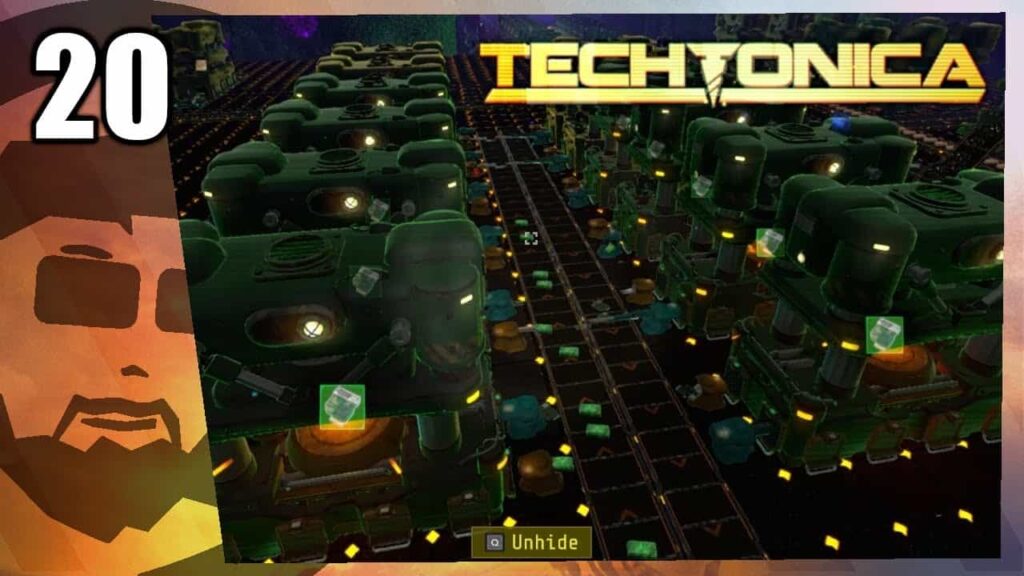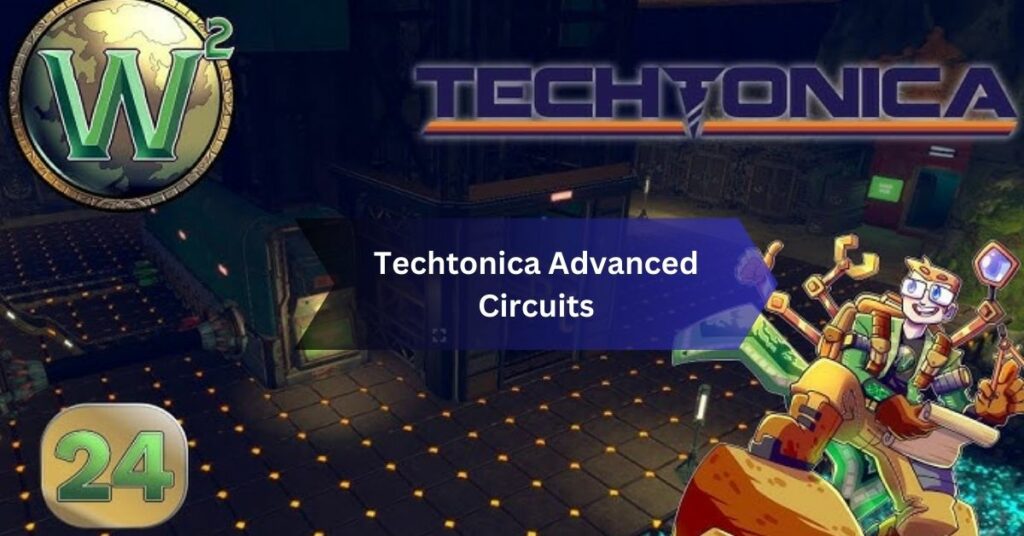In the realm of modern technology, innovation is the cornerstone of progress. Among the myriad advancements shaping our world, Techtonica Advanced Circuits are pioneers of cutting-edge electronics.
Techtonica Advanced Circuits are cutting-edge electronic components, utilizing flexible substrates and advanced elements to enhance performance, reliability, and versatility across various industries.
This article discusses how these circuits represent a leap forward in design, functionality, and performance, pushing the boundaries of what’s possible in electronic engineering.
Introduction To Techtonica Advanced Circuits:
In the ever-evolving landscape of technology, one name stands out for its groundbreaking innovations: Techtonica Advanced Circuits.
These circuits represent a pinnacle of engineering marvel, revolutionizing various industries with superior performance and versatility.
Techtonica Advanced Circuits play a vital role in powering our modern world, from the heart of your smartphone to the sophisticated systems of spacecraft.
Key Components And Features:
1. Materials Used in Techtonica Advanced Circuits:
Techtonica Advanced Circuits incorporate various cutting-edge materials to achieve optimal performance and reliability. Some of the critical materials used in Techtonica circuits include:
- Substrates: Unlike traditional circuits that rely on rigid substrates such as fiberglass, Techtonica circuits utilize flexible substrates like polyimide. This flexibility allows for greater freedom in design and enables the circuits to conform to curved surfaces, making them ideal for applications where space is limited.
- Conductors: High-conductivity materials such as copper are commonly used as conductors in Techtonica circuits. Copper offers excellent electrical conductivity while remaining relatively cost-effective, making it the material of choice for carrying electrical signals across the circuit.
- Dielectric Materials: Dielectric materials insulate conductive traces and prevent short circuits. Techtonica circuits often employ advanced dielectric materials with low dielectric constants, minimizing signal loss and ensuring reliable performance even at high frequencies.
- Solder Masks: Solder masks are applied to the surface of the circuit to protect the conductive traces and pads from environmental contaminants and solder bridging during assembly. Techtonica circuits may use specialized solder masks with improved adhesion and thermal stability to withstand the rigors of manufacturing processes.
- Surface Finishes: Surface finishes are applied to the exposed copper surfaces of the circuit to enhance solderability and prevent oxidation. Common surface finishes used in Techtonica circuits include electroless nickel immersion gold (ENIG) and immersion silver, which provide a stable solderable surface for component attachment.
2. Notable Features And Functionalities:

Techtonica Advanced Circuits boast many features and functionalities that set them apart from traditional circuits. These include:
- Miniaturization: Techtonica circuits are known for their compact size and high component density, allowing for integrating complex electronic systems into smaller form factors. This miniaturization enables the development of sleeker, more portable devices without compromising performance.
- High-Speed Performance: With advancements in materials and manufacturing techniques, Techtonica circuits can support high-speed data transmission and processing. This makes them ideal for real-time communication and signal integrity applications, such as high-frequency radio-frequency (RF) systems and high-speed digital interfaces.
- Flexibility and Durability: Using flexible substrates in Techtonica circuits provides them with excellent flexibility and durability, allowing them to withstand bending and flexing without compromising functionality. This flexibility makes them well-suited for applications in wearable electronics, automotive interiors, and other dynamic environments.
- Embedded Components: Techtonica circuits may incorporate embedded components such as resistors, capacitors, and inductors directly into the substrate, eliminating the need for discrete components and reducing overall size and weight. This integration enhances reliability and simplifies assembly, making the circuits more cost-effective and space-efficient.
- Multi-Layer Architecture: Techtonica circuits often feature multi-layer architecture with stacked conductive traces separated by insulating dielectric layers. This multi-layer design allows for complex interconnections and routing of signals, enabling the integration of diverse functionalities into a single compact package.
Applications In Various Industries:
Techtonica Advanced Circuits have diverse applications across several key industries:
1. Electronics Sector:
Techtonica circuits power various devices in the electronics sector, including smartphones, laptops, and smartwatches. They enable connectivity, processing power, and functionality essential for modern electronics.
2. Medical Field:
In the medical field, Techtonica circuits are vital components in diagnostic equipment, patient monitoring systems, and implantable devices. They enhance accuracy, reliability, and wireless connectivity, improving healthcare outcomes.
3. Automotive Industry:

In automotive, Techtonica circuits support safety features like collision detection and adaptive cruise control. They also aid electric vehicle development, providing power management and motor control functionalities.
4. Aerospace Domain:
Techtonica circuits are crucial for avionics systems, communication networks, and navigation systems in aerospace. They ensure precision control and facilitate advanced sensor integration for autonomous flight systems.
Techtonica circuits drive innovation and efficiency across these industries, shaping the future of technology and improving safety and functionality in various applications.
Advantages Of Traditional Circuits:
Techtonica Advanced Circuits offer several advantages over traditional circuits:
1. Efficiency Improvements:
Techtonica circuits enhance efficiency through reduced signal loss and improved thermal management. Their advanced design and materials minimize energy wastage, leading to more efficient operation and lower power consumption than traditional circuits.
2. Enhanced Performance:
Techtonica circuits deliver superior performance thanks to their high-speed capabilities, enhanced signal integrity, and reliability.
They offer faster data transmission rates, reduced electromagnetic interference, and improved stability, resulting in better overall performance in various applications.
3. Cost-Effectiveness:

Despite their advanced features, Techtonica circuits can be cost-effective due to streamlined manufacturing processes, reduced material usage, and increased production efficiency.
They balance performance and affordability, making them a cost-effective solution for many applications compared to traditional circuits.
Challenges And Limitations:
Despite their remarkable capabilities, Techtonica Advanced Circuits are not without challenges. The intricacies of designing and manufacturing these circuits pose technical hurdles, requiring specialized expertise and equipment.
Moreover, the rapid pace of innovation in this field means that staying ahead of the curve demands continuous research and development efforts.
Future Prospects And Innovations:
Looking ahead, the future of Techtonica Advanced Circuits appears promising. Emerging trends such as flexible electronics, wearable technology, and internet-of-things (IoT) devices drive demand for even more advanced circuits.
Researchers are exploring novel materials and fabrication techniques to push the boundaries of what’s possible, opening up new avenues for innovation and growth.
Environmental Impact:
Techtonica Advanced Circuits are also making strides toward sustainability in an era of increasing environmental consciousness.
Manufacturers are adopting eco-friendly practices such as recycling electronic waste and reducing the use of hazardous materials in circuit production.
Furthermore, efforts are underway to develop biodegradable substrates and components, ensuring minimal environmental footprint throughout the lifecycle of these circuits.
Frequently Asked Questions:
1. What Makes Techtonica Advanced Circuits Different From Traditional Circuits?
Techtonica circuits leverage advanced materials and designs to offer superior performance and reliability compared to traditional circuits.
2. Where Are Techtonica Advanced Circuits Commonly Used?
These circuits find applications in various industries, including electronics, healthcare, automotive, and aerospace.
3. Are There Any Environmental Considerations Associated With Techtonica Circuits?
Manufacturers are increasingly adopting sustainable practices to minimize the environmental impact of circuit production and disposal.
4. What Are Some Future Trends In Techtonica Advanced Circuits?
Emerging trends include flexible electronics, wearable technology, and internet-of-things (IoT) devices, driving demand for more advanced circuits.
5. How Do Techtonica Circuits Contribute To Innovation And Progress?
Techtonica circuits play a crucial role in driving innovation and progress in various industries by enabling cutting-edge technologies and solutions.
6. What are Techtonica Advanced Circuits?
Techtonica Advanced Circuits refer to complex electronic circuits designed with advanced technologies and components to achieve specific functionalities or performance characteristics. These circuits are often used in sophisticated electronic devices, such as computers, smartphones, and medical equipment.
7. How do Techtonica Advanced Circuits differ from standard circuits?
Techtonica Advanced Circuits typically incorporate advanced materials, designs, and manufacturing techniques that go beyond traditional circuitry. They may feature high-speed signal processing, miniaturized components, multi-layered PCBs (Printed Circuit Boards), advanced semiconductor devices, and specialized coatings or substrates.
8. What are some applications of Techtonica Advanced Circuits?
Techtonica Advanced Circuits are used in a wide range of applications across industries, including telecommunications, aerospace, automotive, healthcare, and consumer electronics. They power critical systems such as high-performance computing, wireless communications, navigation systems, imaging devices, and industrial automation.
9. What expertise is required to design and manufacture Techtonica Advanced Circuits?
Designing and manufacturing Techtonica Advanced Circuits require expertise in electrical engineering, electronics design, PCB layout, signal integrity analysis, thermal management, and manufacturing processes. Professionals in these fields work collaboratively to develop and optimize circuit designs for specific applications.
10. What are the challenges associated with Techtonica Advanced Circuits?
Challenges in designing and manufacturing Techtonica Advanced Circuits include managing signal integrity and noise, ensuring reliability and durability under extreme conditions, minimizing power consumption, meeting regulatory standards and certifications, and keeping up with rapid technological advancements. Overcoming these challenges requires innovation, collaboration, and continuous improvement in design and manufacturing practices.
Conclusion:
In conclusion, Techtonica Advanced Circuits represent a cornerstone of modern technology, powering innovation across various industries. With their superior performance, versatility, and potential for further advancements, these circuits are poised to shape the future of electronics profoundly. As we continue to push the boundaries of what’s possible, Techtonica circuits will remain at the forefront of technological innovation, driving progress and enriching our lives.
Read:
